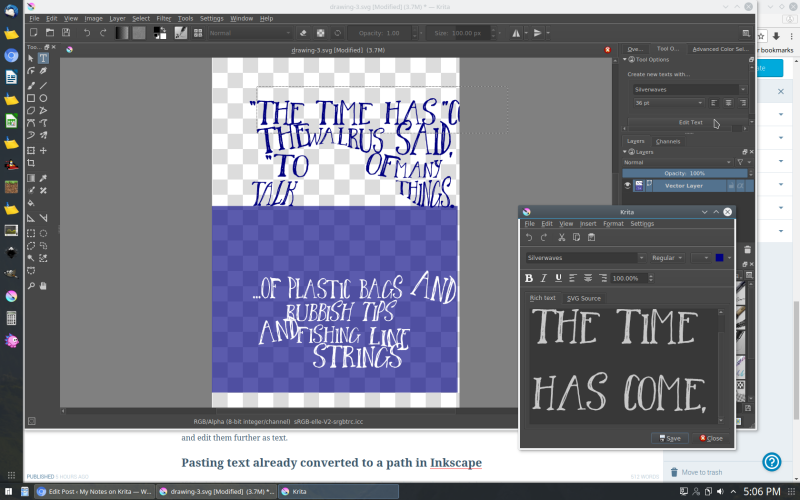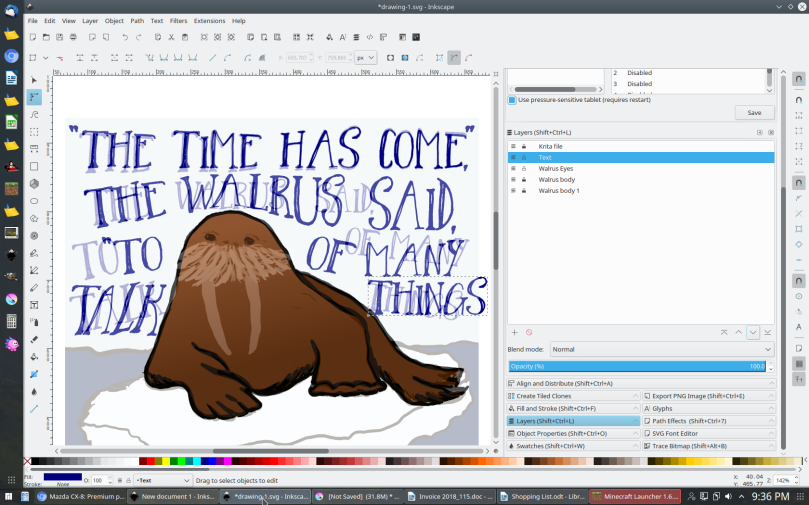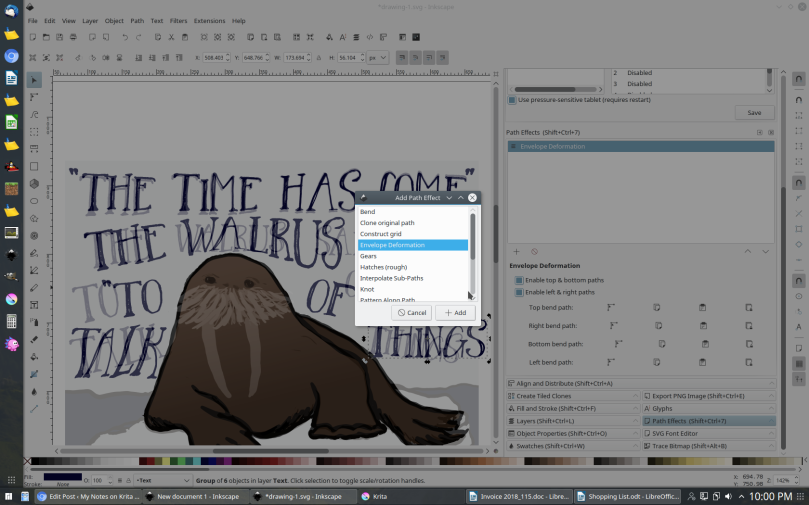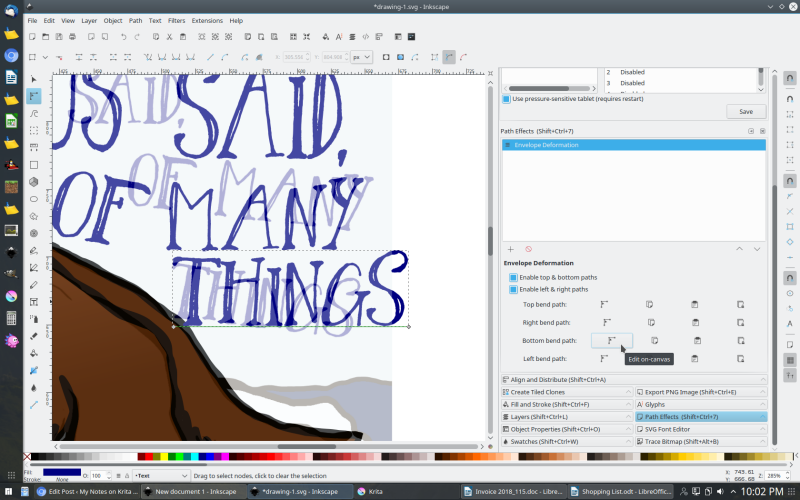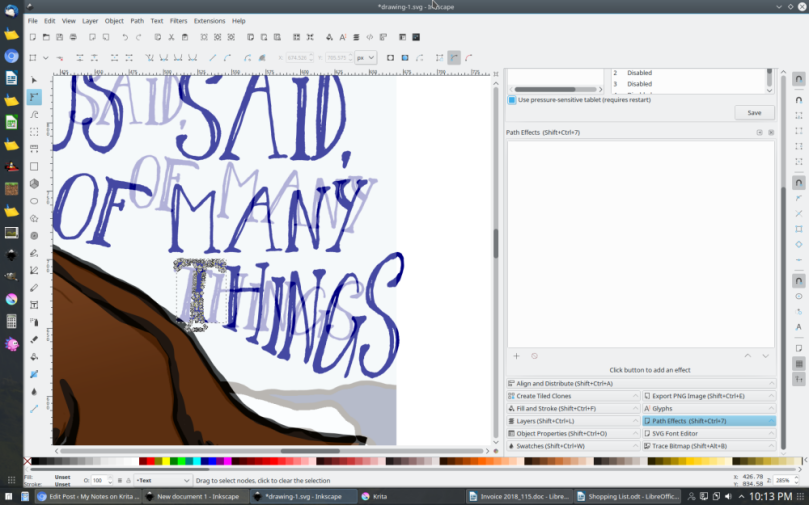Notes to self on painting multiple images separately to be collated later into a map poster.
When would I use this workflow:
- for images which have areas of paint that are connected in some way, like a watercolour painting of an ink sketch – almost thinking like a vector illustration?.
- for images where the colour is filling in an ink sketch – easy to change the colours and repaint elements
- for images where there are 3 or 4 elemtns which will be trated the same way (eg – colouring an architectural ink sketch – wood slats /window panes / window frames/ plastering all would be treated in their own separate ways and coloured the same throughout the sketch wherever they appear).
- when I needing to paint without focusing on the boundary of the thing being painted – when the boundary might change and enlarging something with paint would not look good ( = need to use masks and alter the mask only, not the paint layer).
Remember to set up template to use for each image (consistent image size, resolution, consistent watercolour paper (set to multiply))
Make a note of the pixel size of any pen used, and the pens used for each sub-image. (Develop palette for the colour of items used across images (eg linework).
Thing to remember: when you turn a layer into a mask, it then attaches as a mask to the layer ABOVE in the layer stack.
Workflow
(1) Paper layer
Watercolour paper png set to multiply. Keep this layer at the very top of the layer pile.
(2) Colorizing ink sketch.
Setup
- Have ink sketch on its own layer. No further changes are to made to this layer. Lock when not in use.
- Note to self: Have outer, thicker sketch lines on a different layer from the thinner inner sketch lines: easier to test whether image looks better with no inner sketch lines etc later on.
Colorizing:
- Create new layer ABOVE ink sketch layer. Fill the whole layer with the desired colour.
- Note: colour entire layer at first, but later, try painting different colours over where the inner and outer sketch lines are?
- Click on ink sketch layer. Choose from Menu Filter > Adjust > Invert (or press CTRL + I)
- Click on ink sketch layer. Right click on Layer name, choose Convert > choose To Transparency Mask
- Ink sketch layer is now a transparency mask of the colour layer above, shown indented in under the colour layer in the layer stack.
- To change ink sketch, click on that layer in the layer stack to activate it and when drawing remember to use a pen with white colour to add changes, or black colour to erase stuff.
- To change colours of lines, click on the colour layer (the main layer) in the layer stack to activate it and paint on it in the desired colour.
- Note: can copy the mask layer and attach it to another layer (drag and drop on the other layer – takes some practice to drag to the right spot under the new colour layer.)
(3) Set up layers for colouring major elements in the image
Create the mask layer
- Create a new layer. Call it for example ¨Mask_Window Panes¨ or¨Mask_White items¨
- Work on this new layer (lock all other layers?) Using the various Selection tools, select all the areas that will be coloured in common (eg, all the window panes). Usually use the polygon selection tool or the pen selection tool. Trace relevant areas visible in ink sketch (which is on a locked layer below).
- When selecting a new area, add it to the existing selection by holding SHIFT down while selecting.
- When done, paint-bucket-fill the entire area with the whitest WHITE.
Create the colour layer
- Create a new layer ABOVE the mask layer. Call it something like ¨Window Panes¨ – depending on what I called the mask layer etc.
- Paint as desired (eg – large watercolour paint area).
Attach the mask to the colour layer.
- Right click on the mask layer and choose Convert > choose To Transparency Mask.
- The mask layer is now attached to the colour layer which was above it in the layer stack.
- To change mask boundaries, click on it in the layer stack to activate it, and when drawing remember to use a pen with white colour to add changes, or black colour to erase stuff.
- To change colours of paint layer, click on the colour layer (the main layer) in the layer stack to activate it and paint on it in the desired colour.
 Transform a layer or selection button.
Transform a layer or selection button.

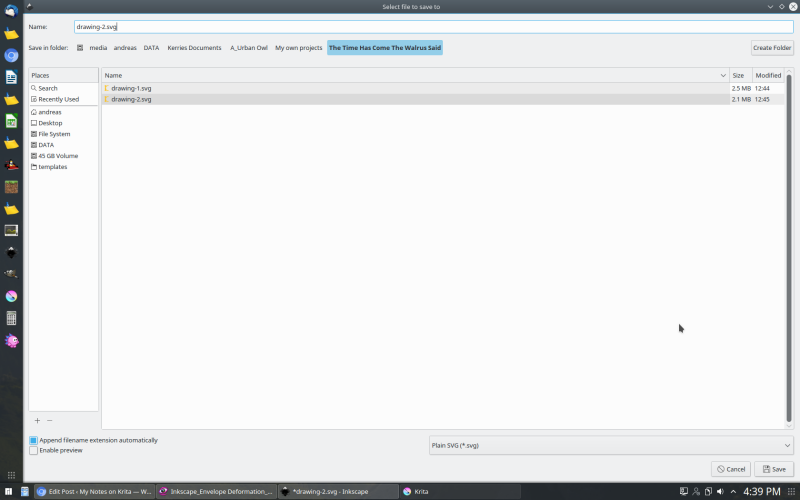
 button is highlighted. Although the object looks editable, while the
button is highlighted. Although the object looks editable, while the 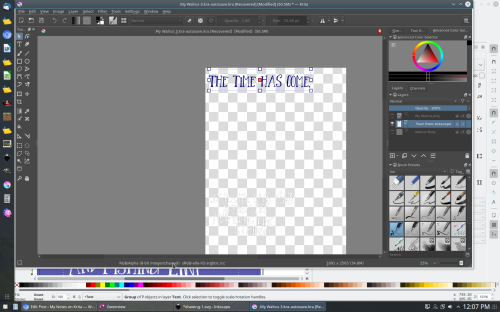
 in the usual manner.
in the usual manner.